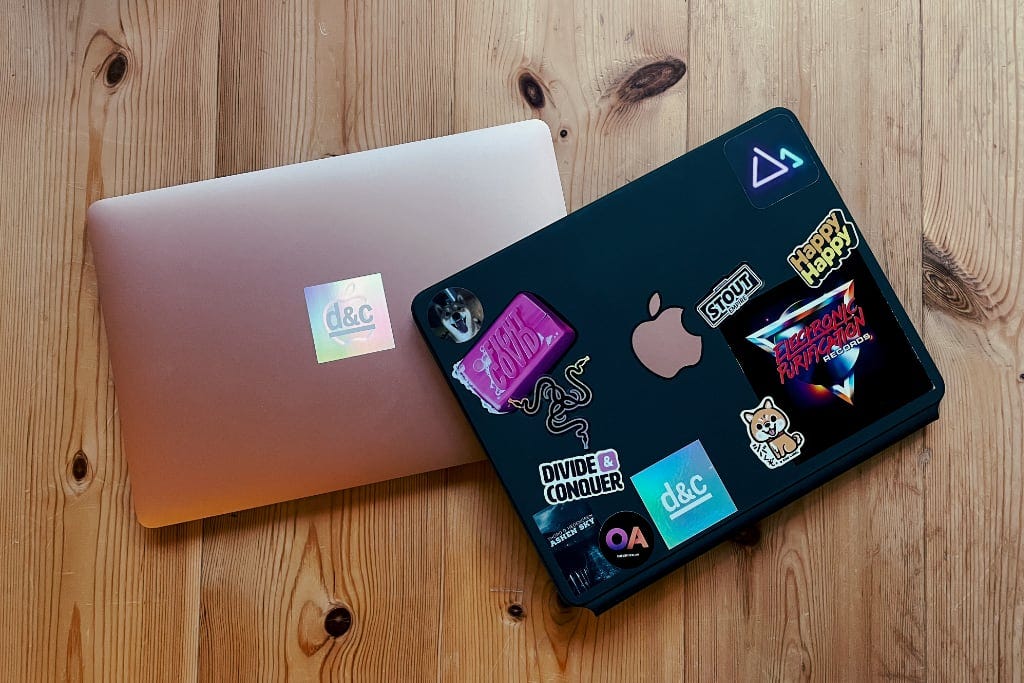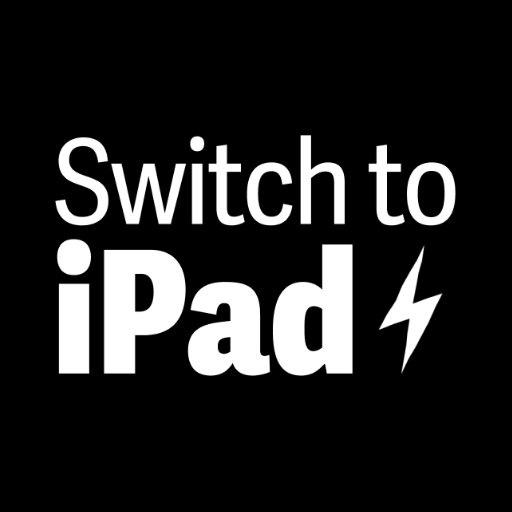🆓 This member post is free for all, thanks to our paying subscribers. Enjoy!
Hi there!
Apple’s latest batch of Macs, the new MacBook Air, MacBook Pro, and Mac mini, all sport the first generation for Mac-specific Apple Silicon. That’s just a fancy word for Apple processors, something that’s been in the iPad and iPhone for years. The new Mac processors are called M1, and they’re very much akin to the A processors in the iOS devices. That also means that they carry with them a lot of the things that have made the iPad in particular such a great computing device: Instant on, great battery life, and snappy performance.
It’s no surprise that would-be (and current) iPad switchers would eye the new M1 Macs. So, let’s talk a bit about that, shall we?
Let’s get this out of the way: The new M1 Macs are great. Battery life is stellar, apps that are tailored to M1 are a lot faster than their Intel equivalents, and most other apps (running the Rosetta 2 conversion) are too. While some apps might just not work, I have no complaints. I’m impressed by both the M1 MacBook Air and Mac mini, and I have no reason to suspect that the new MacBook Pro would be any different. You’re not going wrong with any of these, unless you have very Intel-specific demands, if you’re eying a Mac.
Right. Yes. I’ve got M1 Macs. I love them, they’re great. Now let me tell you what this means.
Performance
M1 Macs are snappy, fast, offer great battery life, and utterly crushes the competition. If you want more detail than that, search the web for benchmarks and number crunches. I care little for theoretical scenarios, but I’ll tell you this: My 2019 pimped out 16” MacBook Pro with 32 GB RAM feels slow in comparison to the M1 Mac mini with 16 GB RAM. That’s not all though, the Mac mini is half its price, or less. Ridiculous.
I’m not surprised though, since my 12.9” iPad Pro holds its own against said 16” MacBook Pro too, when I can compare them. I use Macs for work things that I just haven’t been able to transition yet, thus it’s a bit of a skewed comparison, but I’ve always felt that the problem with my iPads hasn’t been power, it’s the limitations of the operating system overall, and the apps in general.
Hence, Switch to iPad, right?
That said, I can’t claim that my iPad Pro has anything on any M1 Mac available to date. The MacBook Air is the killer, with all the snappiness of an iPad Pro but on macOS, and battery life that crushes it, at a small and lightweight form factor. The only way they could’ve made that better is if they’d done the 12” MacBook on a M1 instead. That’d been something. I love that small MacBook, still got one (in gold!) just because I can’t get rid of it. It’s ridiculously slow compared to an iPad — any modern one — though, so I can’t recommend a 12” MacBook at all. But the new M1 MacBook Air? That’s a great computer, if you want the laptop form factor.
I digress. The key takeaway here is that, performance-wise, the iPad — no matter the model — has nothing on the M1 (portable) Macs. That’s the gist of things. Bam.
But it’s not that simple, is it?
🐘 The elephant in the roomYes, you can run iOS apps on your M1 Mac, and it works, but not without some jarring issues. Apps that play nice with the touchpad, which is just about all apps now thanks to the great implementation in iOS and iPadOS, will work as intended, but that’s not the whole story. The feel of the apps are off because your expectance running an app on your Mac is different from on an iPad. Or, to put it this way, LumaFusion will get the job done on your M1 Mac — and render videos faster than your iPad Pro — but it won’t feel right. Feel, that’s the key here, it’s how it feels, not how it performs. And if it feels off, the performance will matter less. I tend to stick to apps built for M1 proper, like Darkroom for example — that one works great — and stay clear of running apps not compiled for M1 macOS.
M1 MacBook vs. iPad Pro with Magic Keyboard
Performance only matters if it’s lacking. And while you could argue that it is if there’s something better out there, that isn’t exactly true, is it? If your computer runs slow, performance is lacking. If it runs adequately, then it isn’t. (Incidentally, there’s no “runs fast” in this scenario because the only thing that matters is your experience, not the fact that your computer is an element of wonder beyond what was science fiction a decade ago. Do try to keep up.)
Here’s the thing: A modern iPad — all models — won’t run slow. It just won’t because they don’t.
A 2020 (or 2018, most people won’t catch the difference anyway) iPad Pro definitely won’t run slow. It’ll be as snappy as can be.
Get a new M1 MacBook Air, and it is also as snappy as can be. Hence, performance is off the table here.
Weight might not be. The M1 MacBook Air weighs 1,290 grams, and a 12.9” iPad Pro with the Magic Keyboard clocks in at 1,350 grams in total. And yes, I’m including the Magic Keyboard in the comparison because you get both that and a pointing device (trackpad) on the MacBook Air. The Brydge Pro Plus (fully featured in a recent issue) is an alternative weighing 20 grams less, and you could always go with stand-alone units, but that’ll add a stand or iPad cover to prop up your device into something somewhat resembling a laptop. Let’s just agree that weight, as it were, isn’t an issue here — the difference isn’t enough to talk about for most people.
Battery life is an instant win for the MacBook Air. 15 hours of web use, compared to 10 hours for the iPad Pro. It’s amazing that the iPad Pro, that’ll keep working for a full day, isn’t even close to the performance of the MacBook Air in this department. (And the MacBook Pro is even better.)
So, how about price? A 512 GB M1 MacBook Air is $1,249 (8 GB RAM, which will probably cut it, 16 GB will set you back another $200), whereas a 512 GB 12.9” iPad Pro is $1,299 as it is, and the Magic Keyboard is another $349, so you’re at $1,648 — a substantially larger number. Again, you could cut that by picking something other than the Magic Keyboard, but you won’t save more than $100-150.
Price might be an issue then, and so could battery life if you need your device to cross the 8-10 hours mark without charging, but in the end the only thing that truly is something worth thinking about is the operating system, and how you interact with it.
A MacBook is a typical laptop, it works the same. You type on a keyboard, you interact with things using a pointing device, usually a trackpad.
An iPad is a tablet, meaning that you can do all the laptop stuff (with the adequate accessories), but also touch the screen, swipe and zoom it, and even pick up an Apple Pencil to get fine-grained stylus (yeah, I said it) control.
The question is, and boils down to, what do you want? I can truly understand that people who’ve enjoyed their iPads so much because of their instant-on snappiness are eying M1 Macs. It’s reasonable because they’re comparable in that sense. If your wants and needs from your iPad was those things, but in a laptop form factor, and that was how you interacted with your iPad, then you should consider a M1 Mac. They’re that good.
The new shiny
There’s another thing though, and that’s how the M1 Macs are the new shiny. I’ve spent more time at my desk, using (mostly) an M1 Mac mini these past couple of weeks. It’s not my first choice, but I’ve got some work stuff that still require (as in, work best with) a traditional computing device, and space in conjunction with ergonomics made the laptop form factor bow out for me. Or maybe I just wanted to try out the new Macs, who cares! I got me an M1 Mac mini, and it’s great. Truly, it is — I have very few complaints, and if you think this is the device for you but you’re struggling with the decision I’ll tell you this: It probably is, so just go for it.
It’s also the new shiny gadget in the household. It’s nice to use new things, I like playing around with my partner’s MacBook Air, all because it’s new. Furthermore, it’s also good and great and all that jazz, but it’s mostly new.
Sitting down with the iPad Pro to write various things over the past couple of weeks has been stark reminders of why I love this platform. It’s not because it’s a known tool and interaction model, it’s because it’s focused.
You could argue for the iPad because of iPadOS, but I won’t. I’ll offer a different, more powerful argument.
It’s all about the form factor
My iPads has been laptops when I’ve needed them to be for years. I’ve written millions — yes, millions — of words on them. That’s more than any other kind of device capable of type input that I’ve used, and I’ve been hammering away on computers of all sorts since the late 80s. It’s not necessarily a testament because many things matter in such things, but it is proof that the iPad is a great typing device.
Much like a laptop, you could say. I’ve written quite a lot of words on laptops too, just not as many, I think. It’s the focus, the single-tasking — do one thing at a time — that makes it work for me. This is something iPadOS excels at, it makes doing two things at once even harder than you’d expect.
Here’s the kicker: You don’t need to do things at once, you just need to be able to do them at a rapid pace. Multi-tasking is a technical term, it’s not something people should endeavor to do. Just do what you do, at that moment, and do it properly. Then move on to the next thing.
If that rings true, then iPadOS is designed for you.
For me, it was never about replacing the laptop. I think the laptop form factor is flawed, designed to be a secondary device, but it became the one everyone relies upon. An unhappy accident, that’s what the laptop is.
The tablet is something else. An iPad Pro sitting in a Magic Keyboard isn’t any better, it has the same issues as most laptops. The screen is too low for your neck, it’s awkward to reach out and touch it, all that stuff that I’ve covered previously. The thing is, it doesn’t have to be. A laptop is stuck in its form factor, but I can pull out my iPad Pro, flip it to portrait, and read. Or use the Pencil to mark up a PDF, or whatever it is I need to do. I can use it as a drawing slate, designing something or (in another life) make a work of art in an app like Procreate. These are things that you can do on a laptop, but they’re sub-par (reading) or require expensive accessories (illustrating and so on) that tacks onto the flawed form factor.
This gives me a sense of freedom. I can do something, then change the premises, and do something else. I can code, design, read, type, play a game, watch a movie, read some more, and none of that needs to be tied to the same viewing nor interaction model.
Is it as snappy as an M1 Mac? Yeah, for what you and I do, probably, but even if it isn’t, it’s probably snappy enough for us not to notice.
We’re at a point where the form factor is key. For me, the iPad still wins.
This is the last letter of 2020. Good riddance to this year, and fingers crossed that the next will be better. I’ll be back in your inbox, or wherever you read these things, next week.
Happy New Year!
In the wild…


